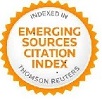Direct Speech in the Castilian Royal Chronicle of the XVth. Century
Keywords:
Speeches, Rhetoric, Historiography, Castilian Royal ChronicleAbstract
In the fifteenth Century, the Castilian royal chronicle reached a literary maturity that is evident in the use of direct speech. There is no linear evolution, but swingsfrom the rich plurality of voices in García de Santa María ́s chronicle, to the extreme selection of Barrientos, conditioned by various propaganda strategies. Enriquez del Castillo expresses the aspiration to eloquence of humanistic historiography. Nevertheless, it is only thanks to Fernando de Pulgar that full awareness of humanistic writing of history is taken, by means of the imitatio of its model, Livy. Humanistic eloquence became a means of exalting the monarchy of the Catholic Monarchs
Downloads
References
CEIV = Diego Enríquez del Castillo, Crónica de Enrique IV, ed. C. Rosell, Biblioteca de Autores Españoles [= BAAEE], t. LXX, Madrid, Atlas, 1953, pp. 99-222.
CJII.1a = Álvar García de Santa María, Crónica de Juan II de Castilla [1ª parte], ed. J. de M. Carriazo, Madrid, RAH, 1982.
CJII.1b = Álvar García de Santa María, Crónica de Juan II [2ª parte], ed. A. Paz y Melia, Colección de Documentos Inéditos para la Historia de España, t. XCIX, Madrid, Imprenta de Rafael Marco y Viñas, 1891 [= CJII.1b.I] y C, Madrid, Imprenta de Rafael Marco y Viñas, 1891 [= CJII.1b.I-II].
CJII.2a =Pedro Carrillo de Huete, Crónica del Halconero de Juan II, ed. J. de Mata Carriazo, Madrid, Espasa-Calpe, 1946.
CJII.2b = L. de Barrientos, Continuación de la Crónica del Halconero, apud CJII.2a.
CRRCCa = Fernando de Pulgar, Crónica de los Reyes Católicos, ed. C. Rosell, BAAEE, t. LXX, pp. 229-511.
CRRCCb = Fernando de Pulgar, Crónica de los Reyes Católicos, ed. J. de M. Carriazo, Madrid, Espasa-Calpe, 1943, 2 vols.












